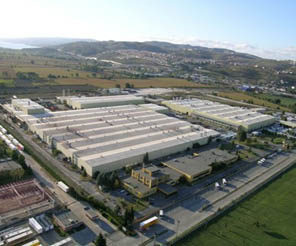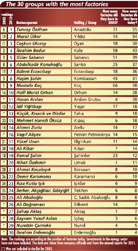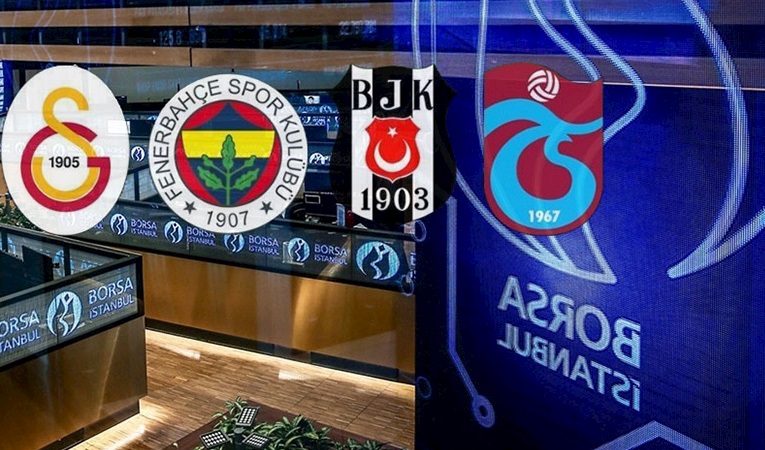
-
BIST 100
 11060,39%0,00En Düşük11011,87En Yüksek11152,28
11060,39%0,00En Düşük11011,87En Yüksek11152,28 -
DOLAR
 42,08%0,07Alış42,0746Satış42,0846En Yüksek42,0898
42,08%0,07Alış42,0746Satış42,0846En Yüksek42,0898 -
EURO
 48,47%-0,01Alış48,4467Satış48,4845En Yüksek48,5733
48,47%-0,01Alış48,4467Satış48,4845En Yüksek48,5733 -
EUR/USD
 1,15%-0,10Alış1,1508Satış1,1509En Yüksek1,1524
1,15%-0,10Alış1,1508Satış1,1509En Yüksek1,1524 -
ALTIN
 5388,51%-0,60Alış5387,87Satış5389,15En Yüksek5421,24
5388,51%-0,60Alış5387,87Satış5389,15En Yüksek5421,24
-
BIST 100
 11060,39%0,00En Düşük11011,87En Yüksek11152,28
11060,39%0,00En Düşük11011,87En Yüksek11152,28 -
DOLAR
 42,08%0,07Alış42,0746Satış42,0846En Yüksek42,0898
42,08%0,07Alış42,0746Satış42,0846En Yüksek42,0898 -
EURO
 48,47%-0,01Alış48,4467Satış48,4845En Yüksek48,5733
48,47%-0,01Alış48,4467Satış48,4845En Yüksek48,5733 -
EUR/USD
 1,15%-0,10Alış1,1508Satış1,1509En Yüksek1,1524
1,15%-0,10Alış1,1508Satış1,1509En Yüksek1,1524 -
ALTIN
 5388,51%-0,60Alış5387,87Satış5389,15En Yüksek5421,24
5388,51%-0,60Alış5387,87Satış5389,15En Yüksek5421,24
- Anasayfa
- Haberler
- Tüm Haberler
- The incredible change
The incredible change
Here are the latest developments on the production front in Turkey...
1.07.2012 00:00:000

The results of the latest "biggest factory owners" survey, which covers the giant groups in Turkey, are full of interesting data. The highest positions in the rankings have changed completely compared with 10 years ago. It is striking that Anadolu Holding, which has 55 factories, has taken over the leadership from Koç. Anadolu Holding is followed by Yıldız Holding with 54 factories and Oyak Holding with 50 factories. The survey shows the trends followed by industrialists over the last 10 years. Here are the latest developments on the production front in Turkey...
Click image to see the table

IN WHICH DIRECTION IS THE TREND HEADING?
When we study the factory champions over the last ten years we see three distinct trends, It is possible to divide companies into groups accordingly, namely: "those who have gone on the offensive", "those who have streamlined11 and "those who have maintained a balance"... Experts confirm that the trend has not been in one direction, In this regard, every holding has acted according to its own strategy. For example, giant groups such as Koç and Sabancı, which ten years ago had tens of big and small companies in a large number of sectors, have over the years opted to streamline their operations. While, over the same period, business people who only had a presence in one area applied a strategy of diversification. It is not difficult to find examples of "those who have gone on the offensive", because there are many who have significantly increased the number of their factories compared with ten years ago. Experts say that the business people in this group preferred to stress their identity as industrialists. They are led by Yıldız Holding, Oyak, Anadolu Holding, Eczacıbaşı and Limak. For example, Yıldız Holding has increased the number of its factories from 14 to 54 over the last 10 years. Anadolu Holding has increased the number of its factories by 77 per cent. The group has increased the number of its production facilities from 31 ten years ago to 55 today and established itself at the top of the list.
THE SECRET OF THOSE WHO HAVE GONE ON THE OFFENSİVE
So what is the secret of those who have grown so fast in as short a period as ten years? Experts say that their strategies all different. Raiffeisen Investment AG Turkey General Manager Gökçe Kabatepe highlights a very interesting point. Kabatepe argues that Anadolu Holding, which tops the list, is an extremely successful and striking example. “Anadolu Holding has grown because it is focused on a single area and has invested primarily in this area for many years. After becoming the market leader, it is very logical is to continue to get stronger in that area and Anadolu Holding is a very good example” The secret of the growth of Kipaş Holding, which has opened 12 new factories in the last ten years and risen from 33rd to 15th on our list, is "diversification". Kipaş Holding Board Member Ahmet Öksüz commented as follows: "Ten years ago we only had investments in textiles and clothing. But we have diversified our sectors and in 2012 we have investments in textiles, cement, energy, agriculture and packaging and will make an investment in paper.”
WHY HAS INTEREST DECLINED?
The second group to emerge from our survey comprises companies which have experienced a significant decline in the number of their factories. The Koç Group, Kale Group and Sabancı Holding head the list of groups which have undergone the most radical decline in the number of their factories.~
RESEARCH
So why has the number of factories in these holdings fallen? In fact, it is necessary to analyse them all separately, because there are different dynamics which affect each one. But the common characteristic of these giants, which occupied the first three places in our list ten years ago, is a process of aggressive streamlining. Koç, Kale and Sabancı decided to reduce the number of sectors in which they were active and to focus on those areas in which they were strongest. For example, Koç Holding closed 2011 with a turnover of TL 75.7 billion after selling a total of 11 manufacturing companies over the previous ten years, including Mako, İzocam, Demirdöküm and Beldesan. As a result, the number of its factories declined from 66 to 28. During the same period the number of factors at the Kale Group declined by 15 and at Sabancı Holding by 12. In addition, the fact that some sectors have become less attractive has also had an impact in the decline in investments in factories.
THOSE WHO HAVE STAYED THE SAME?
The third group identified by our research comprises those who have not undergone a radical change in performance over the last ten years but have remained the same in terms of numbers... The number of factories owned by these groups is little different to ten years ago. But they share a common characteristic in that, even if they have not increased the number of their factories, they have realized significant increases in capacity and productivity. Petkim is a good example of this. In 2003, the group had 14 factories at its complex in Izmir Aliağa and an annual gross output of 2.5 million tons. Over the last ten years it has only added only one new factory. But, as a result of investments worth TL 950 million, it has increased its output by 25 per cent to 3,000,000 tons. Petkim General Manager Hayati Öztürk had the following to say about the investments they have made: "The investments that have been made over the last ten years have sought to broaden our product range and produce high added value goods. Within this context, in the period 2003 to 2011, Petkim has realized investments worth TL 950 million." Other successful groups which have maintained the same situation as ten years ago include Zorlu, Borusan, Yaşar and Işıklar Holding. Zorlu Holding has increased the number of its factories to 17 and continued to be a major player in textiles, white goods and electronics. But it has not omitted to enter real estate and energy, the rising sectors in recent.
Click image to see the table

IN WHICH DIRECTION IS THE TREND HEADING?
When we study the factory champions over the last ten years we see three distinct trends, It is possible to divide companies into groups accordingly, namely: "those who have gone on the offensive", "those who have streamlined11 and "those who have maintained a balance"... Experts confirm that the trend has not been in one direction, In this regard, every holding has acted according to its own strategy. For example, giant groups such as Koç and Sabancı, which ten years ago had tens of big and small companies in a large number of sectors, have over the years opted to streamline their operations. While, over the same period, business people who only had a presence in one area applied a strategy of diversification. It is not difficult to find examples of "those who have gone on the offensive", because there are many who have significantly increased the number of their factories compared with ten years ago. Experts say that the business people in this group preferred to stress their identity as industrialists. They are led by Yıldız Holding, Oyak, Anadolu Holding, Eczacıbaşı and Limak. For example, Yıldız Holding has increased the number of its factories from 14 to 54 over the last 10 years. Anadolu Holding has increased the number of its factories by 77 per cent. The group has increased the number of its production facilities from 31 ten years ago to 55 today and established itself at the top of the list.
THE SECRET OF THOSE WHO HAVE GONE ON THE OFFENSİVE
So what is the secret of those who have grown so fast in as short a period as ten years? Experts say that their strategies all different. Raiffeisen Investment AG Turkey General Manager Gökçe Kabatepe highlights a very interesting point. Kabatepe argues that Anadolu Holding, which tops the list, is an extremely successful and striking example. “Anadolu Holding has grown because it is focused on a single area and has invested primarily in this area for many years. After becoming the market leader, it is very logical is to continue to get stronger in that area and Anadolu Holding is a very good example” The secret of the growth of Kipaş Holding, which has opened 12 new factories in the last ten years and risen from 33rd to 15th on our list, is "diversification". Kipaş Holding Board Member Ahmet Öksüz commented as follows: "Ten years ago we only had investments in textiles and clothing. But we have diversified our sectors and in 2012 we have investments in textiles, cement, energy, agriculture and packaging and will make an investment in paper.”
WHY HAS INTEREST DECLINED?
The second group to emerge from our survey comprises companies which have experienced a significant decline in the number of their factories. The Koç Group, Kale Group and Sabancı Holding head the list of groups which have undergone the most radical decline in the number of their factories.~
RESEARCH
So why has the number of factories in these holdings fallen? In fact, it is necessary to analyse them all separately, because there are different dynamics which affect each one. But the common characteristic of these giants, which occupied the first three places in our list ten years ago, is a process of aggressive streamlining. Koç, Kale and Sabancı decided to reduce the number of sectors in which they were active and to focus on those areas in which they were strongest. For example, Koç Holding closed 2011 with a turnover of TL 75.7 billion after selling a total of 11 manufacturing companies over the previous ten years, including Mako, İzocam, Demirdöküm and Beldesan. As a result, the number of its factories declined from 66 to 28. During the same period the number of factors at the Kale Group declined by 15 and at Sabancı Holding by 12. In addition, the fact that some sectors have become less attractive has also had an impact in the decline in investments in factories.
THOSE WHO HAVE STAYED THE SAME?
The third group identified by our research comprises those who have not undergone a radical change in performance over the last ten years but have remained the same in terms of numbers... The number of factories owned by these groups is little different to ten years ago. But they share a common characteristic in that, even if they have not increased the number of their factories, they have realized significant increases in capacity and productivity. Petkim is a good example of this. In 2003, the group had 14 factories at its complex in Izmir Aliağa and an annual gross output of 2.5 million tons. Over the last ten years it has only added only one new factory. But, as a result of investments worth TL 950 million, it has increased its output by 25 per cent to 3,000,000 tons. Petkim General Manager Hayati Öztürk had the following to say about the investments they have made: "The investments that have been made over the last ten years have sought to broaden our product range and produce high added value goods. Within this context, in the period 2003 to 2011, Petkim has realized investments worth TL 950 million." Other successful groups which have maintained the same situation as ten years ago include Zorlu, Borusan, Yaşar and Işıklar Holding. Zorlu Holding has increased the number of its factories to 17 and continued to be a major player in textiles, white goods and electronics. But it has not omitted to enter real estate and energy, the rising sectors in recent.
Türkiye ve dünya ekonomisine yön veren gelişmeleri yorulmadan takip edebilmek için her yeni güne haber bültenimiz “Sabah Kahvesi” ile başlamak ister misiniz?
İLGİNİZİ ÇEKEBİLİR
Yorum Yaz
Capital Dergisi'nden son haberleri bildirim olarak almak ister misiniz?






